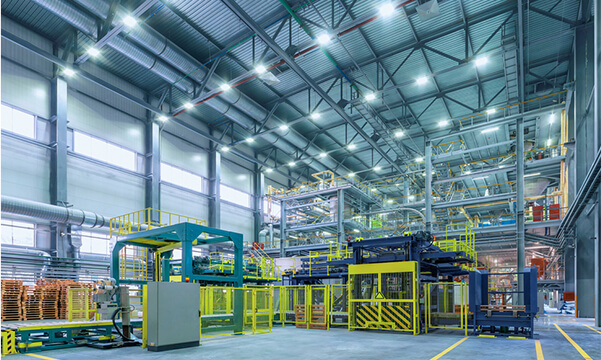
There are many different types of industrial lighting fixtures available. For example, there are LEDs, fluorescents, linear strip lights, and metal halides. Understanding the differences between these different types will help you select the right ones for your specific needs. In addition, industrial lighting fixtures should be reliable and low-maintenance.
Fluorescent
Fluorescent industrial lighting fixtures are available in various sizes and configurations. Many models are available with a low profile and aluminum or hybrid reflectors. In addition, many are UL listed. Many also offer a long manufacturer warranty. These fixtures are often a great choice for industrial settings that need consistent illumination in large areas. In addition, they can produce a broad spectrum of light that is very efficient.
Fluorescent lamps are relatively inexpensive. However, their performance may degrade over time. Typical fluorescent tubes are designed to operate for a certain amount each time they are switched on and off. These lamps can also suffer from temperature fluctuations and underperform in cold conditions. Therefore, fluorescent lamps are not the best choice for many environments.
Fluorescent lamps are commonly used in commercial and industrial settings. These bulbs provide uniform, shadow-free lighting. Fluorescent lights are also popular in residential settings, such as kitchens. Fluorescent bulbs are also highly energy-efficient and come in various shapes and sizes.
Metal Halide
When purchasing metal halide lighting fixtures, there are some important things you need to know. First, they depreciate quickly. Some models take 30 minutes or more to warm up, while others take as little as five minutes. It means that you will be spending more on maintenance over time. Another consideration is that they are more expensive than other options. Metal halides typically run on electricity, making them expensive for long periods.
Metal halide lighting works similarly to an incandescent light bulb, passing an electrical current through a halogen and metal element. This halogen then converts the electricity to visible light. This type of lighting has long been used in high-intensity areas such as factories and warehouses, but newer technologies, such as LEDs, are replacing metal halide lamps. LEDs, which use solid-state technology, do not have the same drawbacks as metal halides.
Changing to LED lighting can save you money in the long run. The newer technology has many benefits over traditional light bulbs. LEDs are also more energy-efficient and last longer than most other light bulbs. However, they tend to produce a harsher light. In addition, they cannot be used with dimmer switches. In addition, they typically produce a cooler color temperature than metal halides.
LED
When selecting LED industrial lighting fixtures, you need to consider several factors. For example, you must ensure that the lighting is bright enough to meet the needs of your workers. Also, you must check the fixtures’ luminosity, temperature rating, and durability. Having a fixture that easily burns out or breaks down is hazardous and may impact the production and safety of your employees. Fortunately, LED lighting is highly reliable and can provide you with years of trouble-free operation.
LED lights in industrial settings must pass a photometry test, a scientific process considering light intensity. This measure is necessary for determining the amount of light a room requires and the size of the workspace. Proper illumination helps employees and equipment work efficiently and comfortably. LED lights also avoid glare and blurring, which are common problems with natural lighting.
LED lights come in a variety of shapes and sizes. Some are designed to be recessed in the ceiling, while others are available in multiples that are suspended from a single overhead fixture. The advantage of LED light fixtures is that they can be easily changed to create a more customized look. Furthermore, they are also suitable for rough environments, such as locker rooms and storage rooms.
Industrial LED lights provide uniform, efficient illumination for a variety of settings, such as in warehouses or factories. These fixtures can be either surface-mounted or pendant-mounted. In general, they are cheaper than other types of industrial illumination.
The main advantage of LED lights is that they provide excellent illumination for a large area. They can be mounted on the ceiling or wall. In addition to being incredibly functional, these lights are also available in a variety of styles. The type of industrial lighting fixture you purchase should reflect the needs of the space.
Another advantage of LED lights is their wide range of color temperatures. This is important because the color temperature will affect how your eyes interpret light, which can affect the mood of a space. For instance, you might want to use a neutral white, or 4000 Kelvin, to create a calm, comfortable atmosphere. Also, LED lights are very efficient and cost-effective, thanks to their low energy usage and inherent longevity
Cory Peterson
Cory Peterson is the Director of Sales & Marketing at LED Lighting Supply where he focuses on improving customer experience and revenue operations. Cory writes about commercial & industrial lighting, along with topics important to contractors and facility managers. In his free time, Cory enjoys traveling, snorkeling, exercising, and cooking.